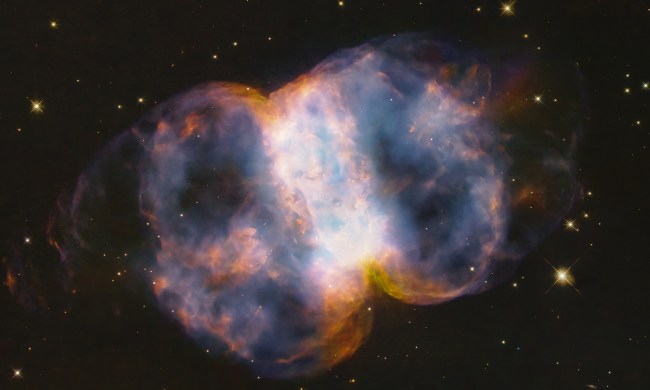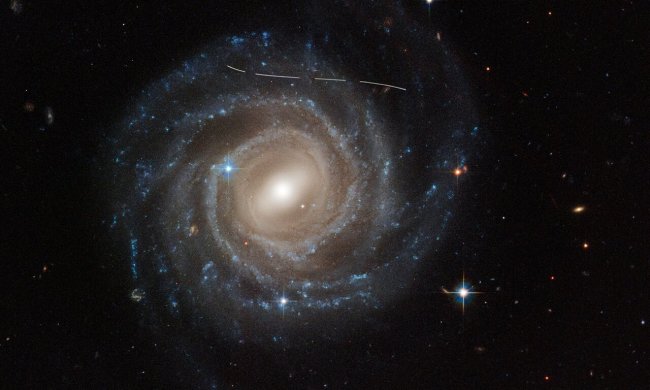Scientists working with the Hubble Space Telescope release an image each week that the telescope has taken recently, and this week’s image shows a lenticular galaxy located 44 million light-years away. Known as NGC 6684, this galaxy in the constellation of Pavo, which can be seen from the Southern Hemisphere.
Lenticular galaxies are different from spiral galaxies such as our Milky Way. Instead of distinct spiral arms reaching out from a center, lenticular galaxies are more amorphous and diffuse, but with a central disk. This type of galaxy is halfway between a spiral galaxy and an elliptical galaxy, which is smooth and almost featureless. Lenticular galaxies don’t have much interstellar matter, or dust and gas floating between stars, so there isn’t much material for the creation of new stars and the rate of star formation within these galaxies is low. The lack of structure in this type of galaxy is emphasized by its absence of dust lanes, making it look even more “ghostly,” as Hubble scientists dub it.

This image was taken as part of a Hubble program called Every Known Nearby Galaxy, which aims to use Hubble to observe every galaxy we know about located within 10 megaparsecs (32.6 million light-years) of Earth that has not yet been imaged. “Before this program began, Hubble had observed roughly 75% of these nearby galaxies,” Hubble scientists write. “Completing this census will reveal insights into the stars making up a wide variety of galaxies, in a wide variety of environments.”
Other galaxies observed as part of this program include LEDA 48062, a faint and sparse galaxy that was imaged in a striking setting among a variety of other galaxy types and the small and fuzzy dwarf galaxy UGCA 307. And Hubble has imaged other close-by galaxies for different programs of research as well, such as a stunningly detailed image of our neighbor, the Triangulum galaxy, that shows the full spiral face of the galaxy as it stretches across nearly 20,000 light-years.



